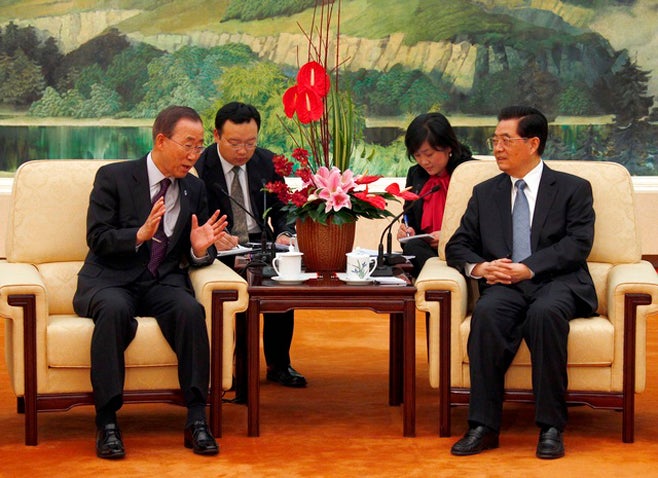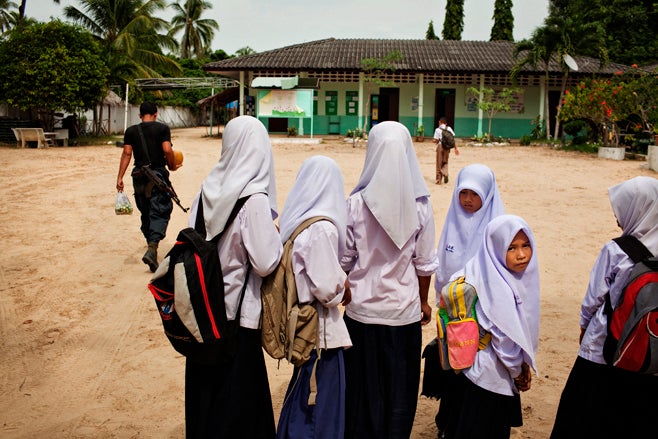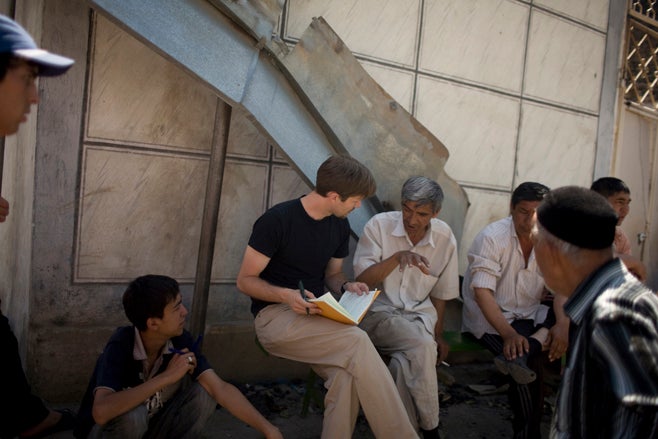A devastating earthquake near Haiti's capital, Port-au-Prince, on January 12, 2010, left an estimated 222,750 people dead, 300,000 injured including 4,000 to 5,000 amputees, and up to 1.6 million homeless and displaced. In total 3 million people were affected by the earthquake. Assessments calculate the material damage at about 120 percent of the country's annual GDP. Twenty-eight of twenty-nine government ministry buildings and approximately 300,000 homes were damaged or destroyed. Estimates from a range of NGOs, media outlets, and the World Bank suggest that Haiti's government lost between 20 and 40 percent of its civil servants.
Ten months after the earthquake approximately 1.3 million people still live in some 1,300 informal settlements or camps, where conditions leave residents vulnerable to flooding, disease, and violence. The government and humanitarian actors prepared for a cholera epidemic, which broke out at the end of October, to spread to the camps by the end of 2010. Many of these camps formed spontaneously on private land, and most internally displaced persons (IDPs) face mounting threats of eviction. The United Nations reports that 29 percent of closed camps have been shut down due to forced evictions or negotiated departures.
The situation after the earthquake has exacerbated Haiti's chronic human rights problems, including violence against women and girls, inhumane prison conditions, and vulnerability of children. Most prisoners who escaped from jail during the earthquake remain at large. Already weak, the diminished capacity of the state since the disaster continues to significantly undermine its ability to safeguard fundamental human rights.
Public Security and the Justice System
Haiti has been plagued by high levels of violent crime for many years. Police ineffectiveness and abuse, along with severe shortages of personnel, equipment, and training, existed prior to the quake and contributed to overall insecurity in Haiti. The earthquake has further weakened the capacity of Haitian National Police (HNP), with 75 officers reported killed, 70 missing, and 253 injured in the quake.
Haiti's justice system, long-troubled by politicization, corruption, shortage of resources, and lack of transparency, also suffered severe losses as a result of the quake. At least 10 members of the judiciary died in the earthquake, and the Ministry of Justice and the Palace of Justice were destroyed, along with many judicial documents. The UN reported that the Supreme Court of Haiti remained non-functioning as of September.
In recent years kidnappings posed a serious security threat. The UN reported the rate of kidnappings increased 33 percent in the first eight months of the year compared to the same period in 2009.
Gender-Based Violence
High rates of sexual violence existed before the earthquake, but the precarious safety situation in the informal camps has left women and girls even more vulnerable to such abuse. It is difficult to get accurate data on sexual violence in the camps. The HNP reported that 534 arrests (24 percent of all arrests) from February-April 2010 involved sexual violence. In other reports the HNP officials indicate that 20 rapes were reported in Port-au-Prince for January-March 2010. This inconsistency in data reflects a lack of coordinated governmental response to sexual violence in the camps. On September 13, 2010, the UN launched a campaign against rape and gender-based violence in Haiti.
Detention Conditions
Haiti's prison system suffered from chronic and severe overcrowding when the earthquake hit. The largest prison in Haiti, the Civil Penitentiary in Port-au-Prince, housed over 5,400 prisoners, all of whom escaped after the quake. Eight months after the quake the UN stabilization mission in Haiti (MINUSTAH) and HNP had re-incarcerated 629 of the escapees. The rest remain at large.
Prior to the earthquake pre-trial detainees constituted almost 80 percent of all prison inmates in Haiti. The UN reports that the loss of judicial files and registries will increase prolonged pre-trial or arbitrary detentions and detentions of people never formally charged. Damage to prison facilities since the earthquake has led to limited cell space and even more dire prison conditions then existed before.
On July 26, 2010, Haiti's government, with UN support, established an independent commission of inquiry into the HNP's violent response to a prison uprising in Les Cayes just days after the earthquake. The GOH called for the commission inquiry after the New York Times published an in-depth report, which claimed that on January 19, 2010, UN and HNP officers circled the prison to prevent a massive outbreak after its 400 detainees began to riot due to worsening conditions after the quake, and that HNP officers stormed the prison. Details of the event are not independently confirmed, but the Times estimated that 12 to 19 inmates died and up to 40 were wounded. The commission had not completed its report at this writing.
Access to Education and Child Labor
Prior to the earthquake only about half of primary school-age children in Haiti attended school. United Nations Children's Fund (UNICEF) estimates that the earthquake damaged or destroyed almost 4,000 schools and that 2.5 million children experienced an interruption in their education. Schools resumed several months after the earthquake; however, many experienced a sharp drop in enrollment.
In 2009 the UN special rapporteur on contemporary forms of slavery estimated there were from 150,000 to 500,000 child domestic workers in Haiti, called "restaveks." Restaveks are children, 80 percent of whom are girls, from low-income households sent to live with other families in the hope that they will be cared for in exchange for them performing light chores. These children are often unpaid, denied education, and physically and sexually abused. The UN and civil society organizations warned that unaccompanied minors and orphans, who increased in number after the earthquake, are vulnerable to this form of forced labor.
Some groups have also raised concerns about improper processing of inter-country adoption in violation of domestic and international standards.
Human Rights Defenders
The human rights community lost three prominent women's rights activists in the quake: Myriam Merlet of Enfofamn, Magalie Marcelin of Kay Fanm, and Anne Marie Coriolan of Solidarite Fanm Ayisen (SOFA).
Human rights defenders in Haiti have often been the targets of threats and attacks. The Institute for Justice and Democracy in Haiti (IJDH) reports that criminal gangs have threatened some women's rights activists living and working on gender-based violence in the IDP camps, forcing them to relocate.
Key International Actors
MINUSTAH, which has been present in Haiti since 2004, has played a prominent role in increasing stability and protecting human rights in the country, but suffered heavy losses in the earthquake; the head of mission and 96 staff were killed, constituting the largest loss of life for the UN in a single incident. The UN has since increased MINUSTAH's capacity and extended its mandate through October 15, 2011. The UN force contains 8,548 troops and 3,063 police.
In April 2010 parliament extended the state of emergency for eighteen months, providing additional powers to the executive and establishing the Interim Haiti Recovery Commission (IHRC). President René Prèval then issued a presidential decree to grant necessary powers to the IHRC. Prime Minister Max Belle-rive and former US President Bill Clinton were named as co-chairs, and the board of the IHRC was constructed to include representatives from Haiti and donor countries. IHRC's mandate is to oversee billions of dollars in reconstruction aid and to conduct strategic planning and coordination among multi-lateral and bilateral donors, NGOs, and the private sector. Clinton also remains the UN special envoy for Haiti, with Dr. Paul Farmer serving as deputy special envoy.



